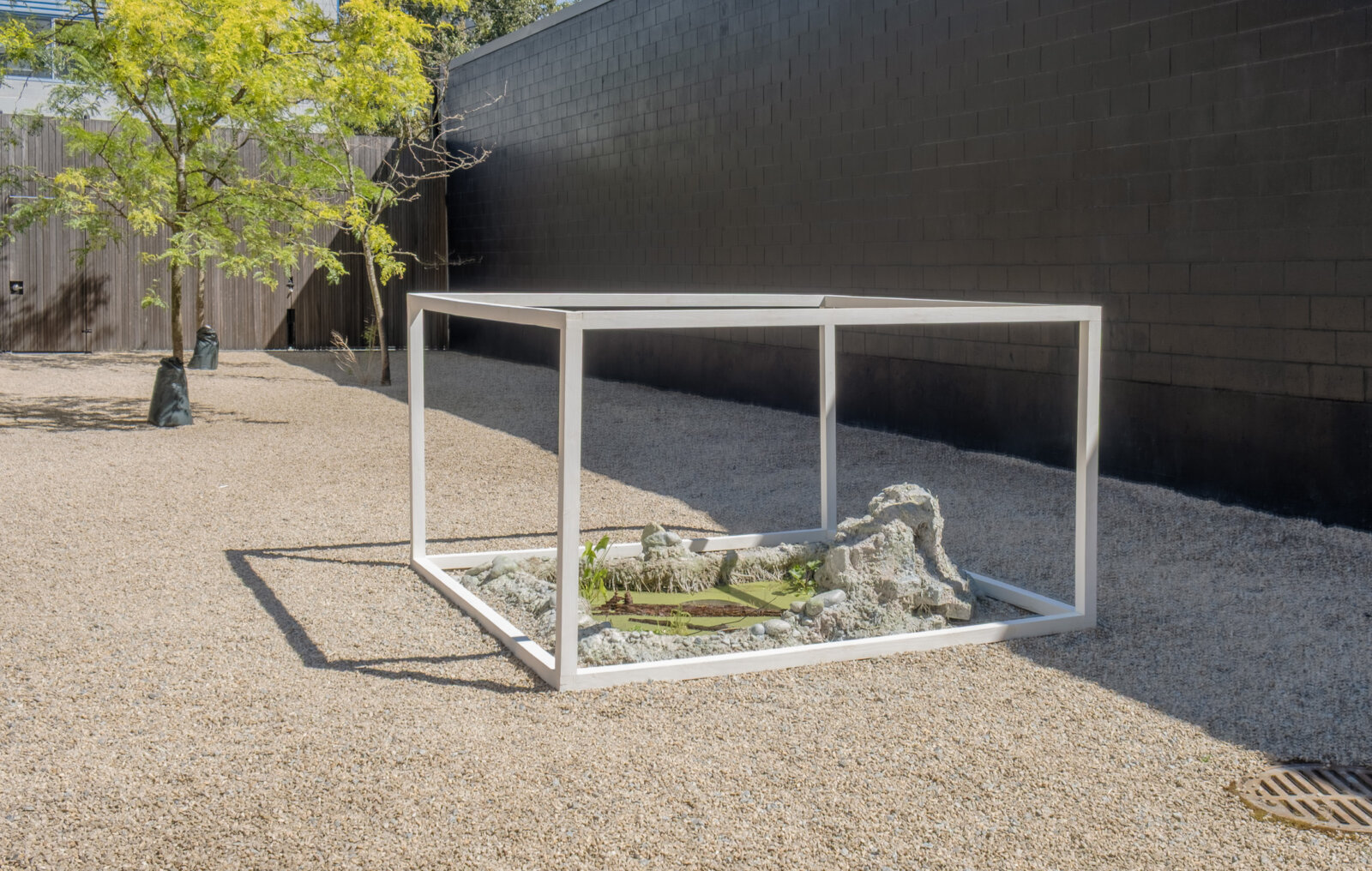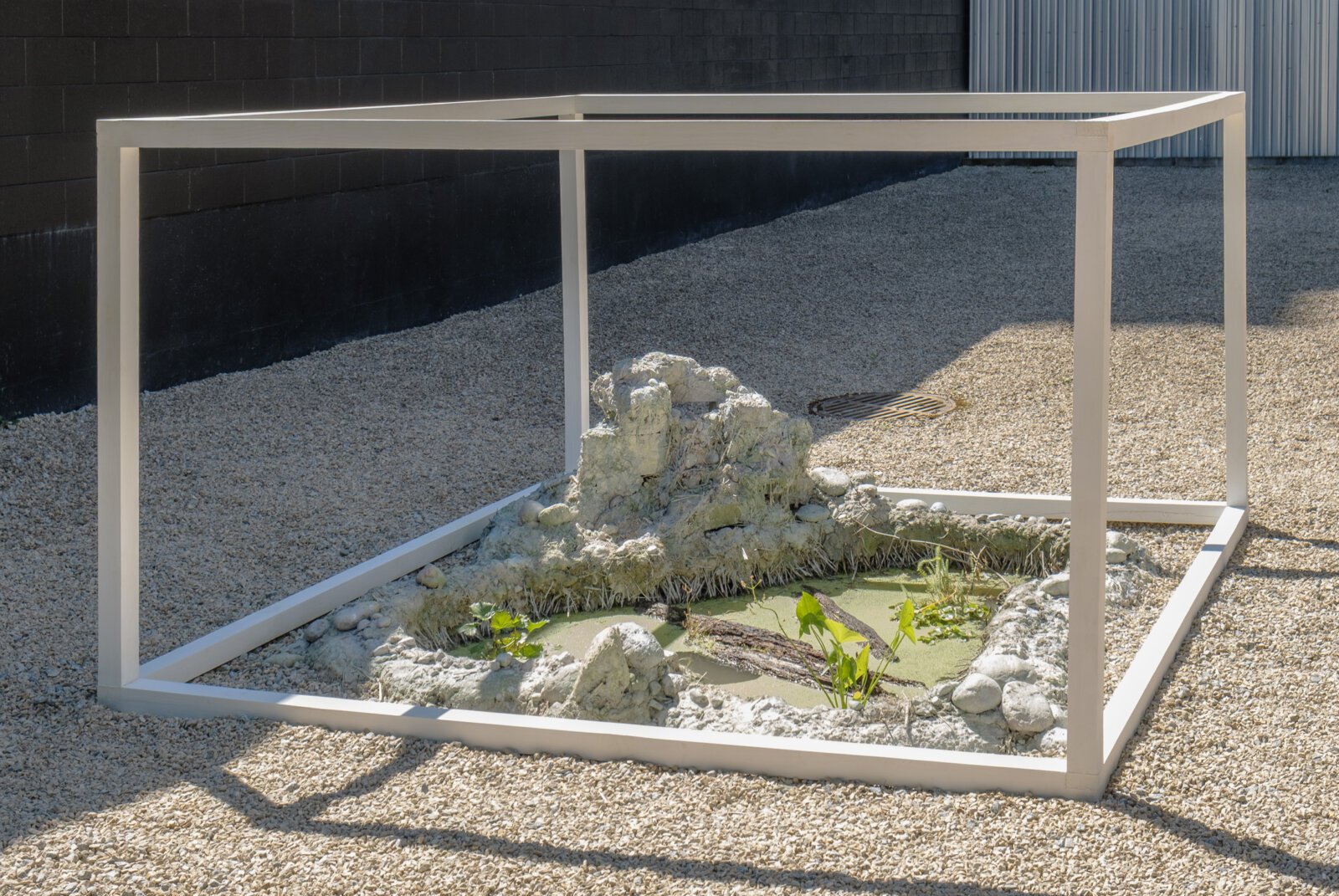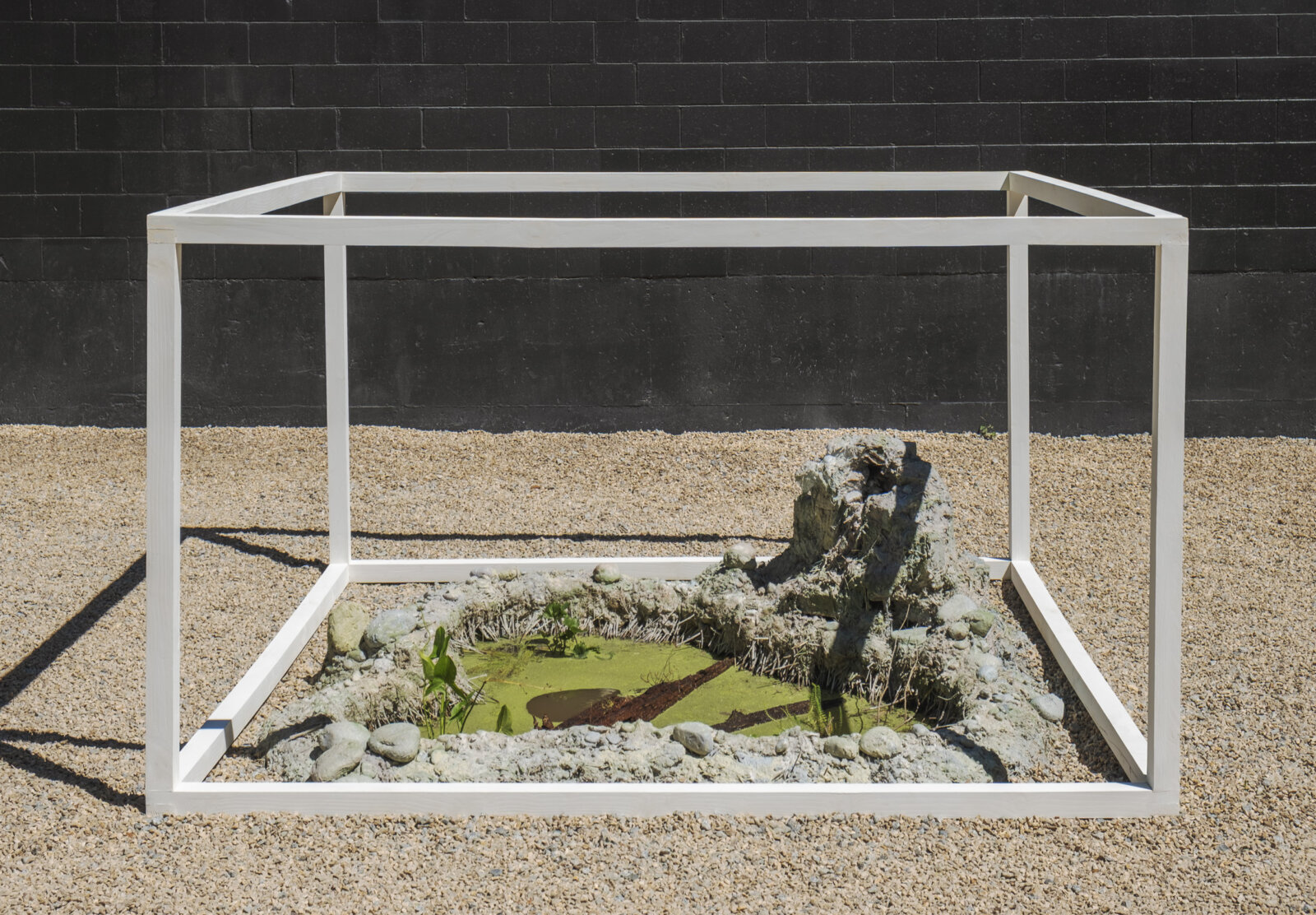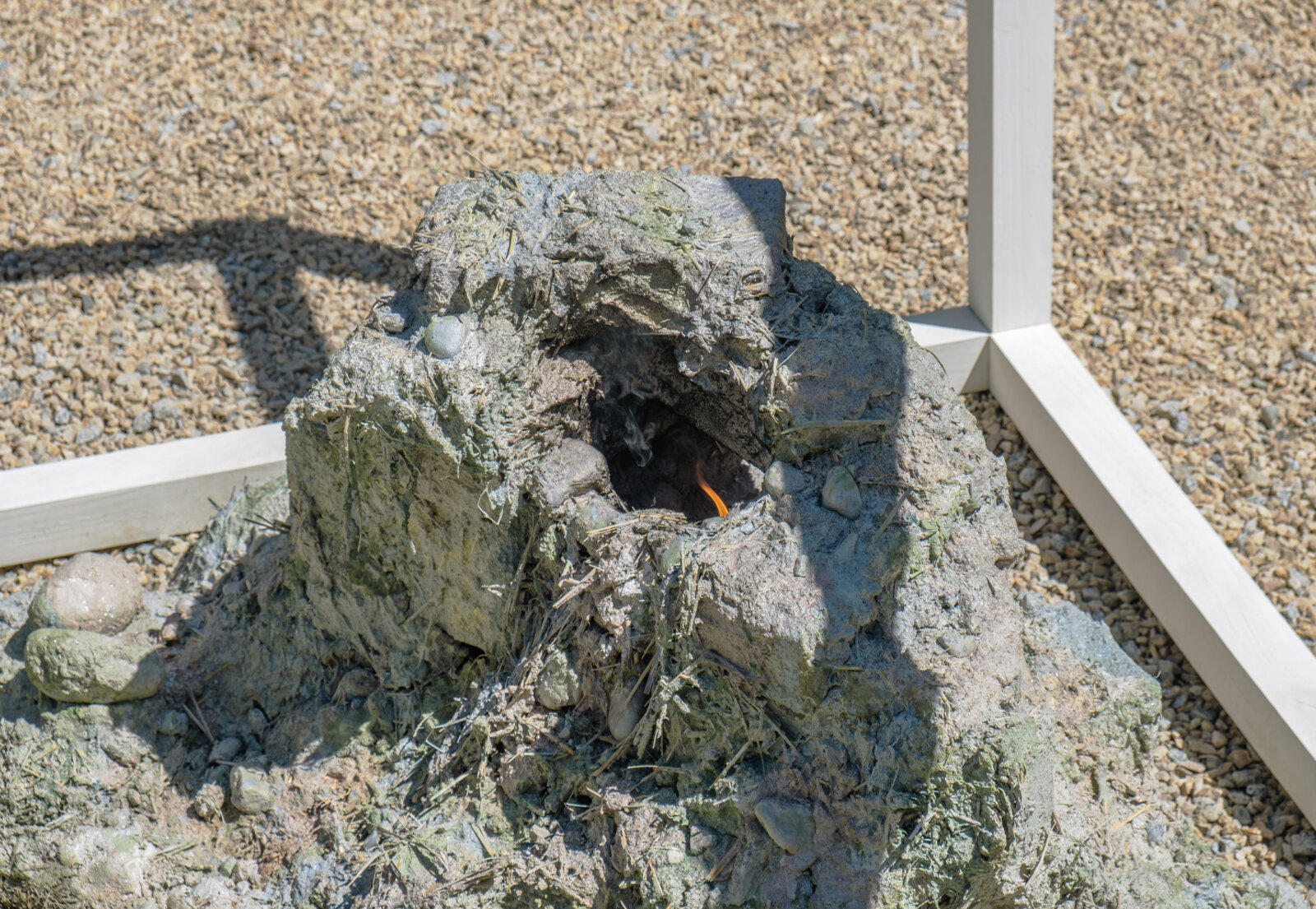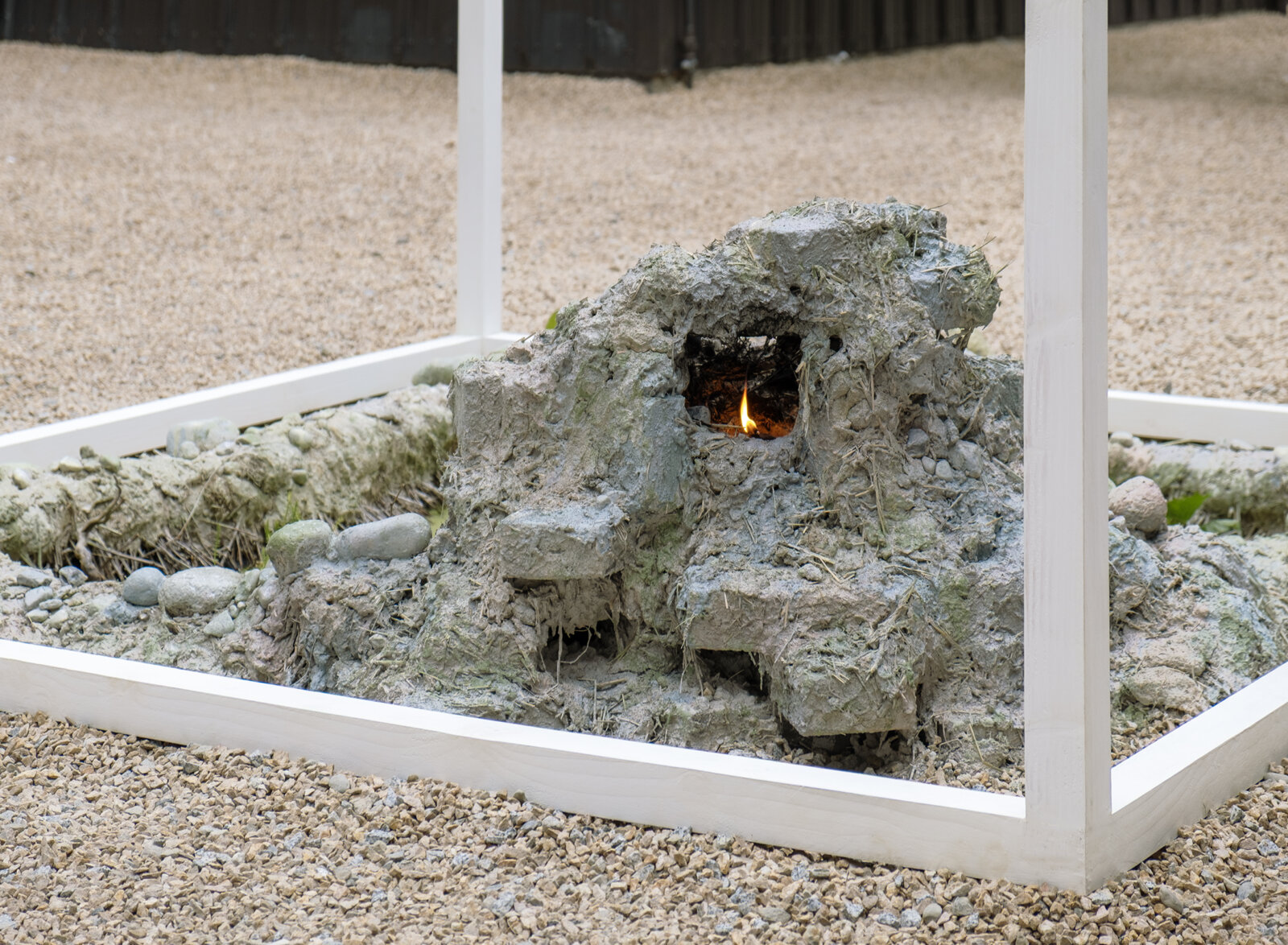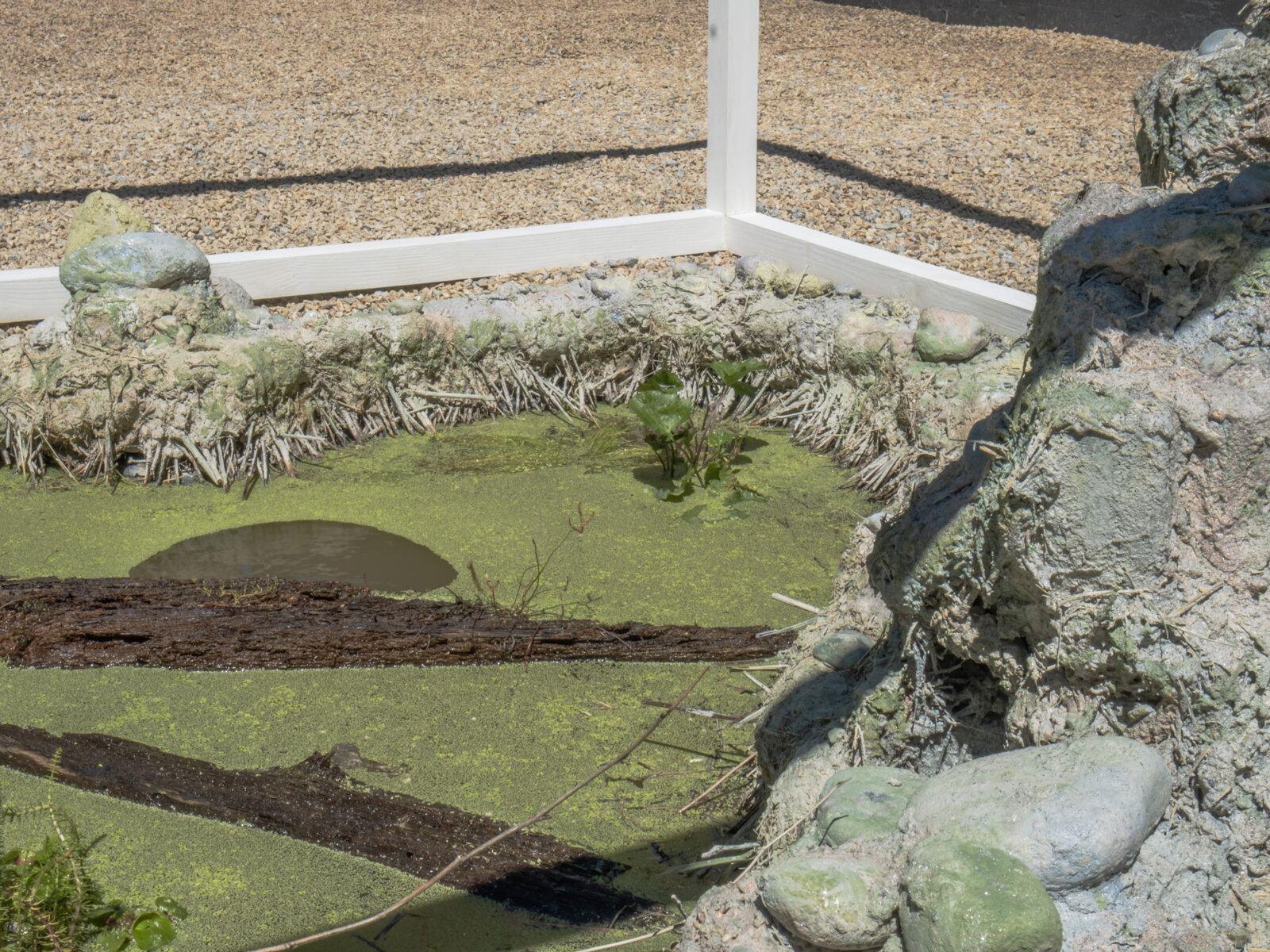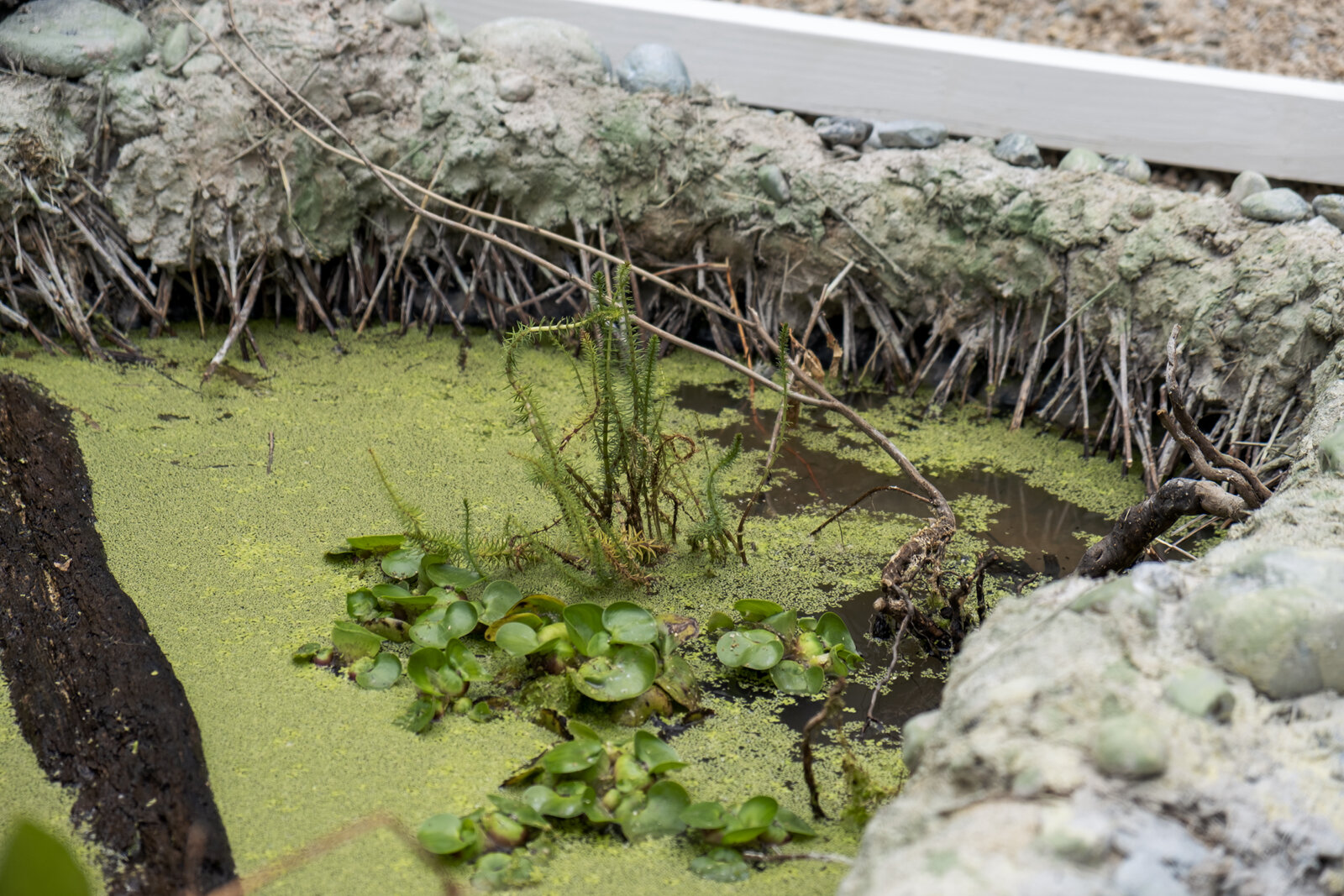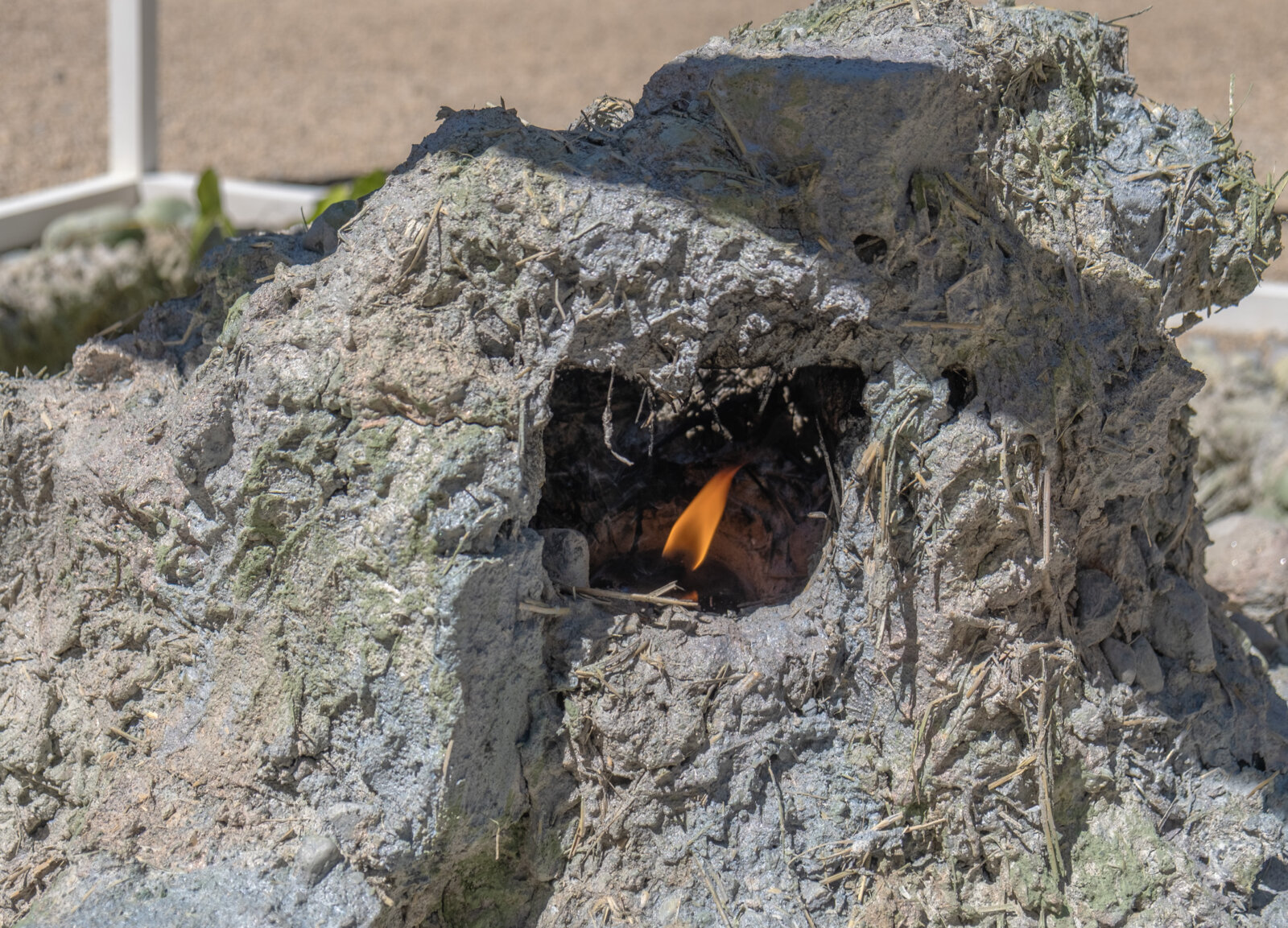Rebecca Brewer – Locus Amoenus: Extinct Flame, JULY 9–30, 2025
Rebecca Brewer and Veit Laurent Kurz
Locus Amoenus: Extinct Flame
July 9–30, 2025
Catriona Jeffries
Rebecca Brewer and Veit Laurent Kurz’s Locus Amoenus: Extinct Flame is a site-specific, cultivated pond delineated by an impassive phosphorescent cube. The vignette emphasizes a modest grotto which rises above the self-oxygenating pool, where a small flame continually burns. Accompanying this courtyard installation are two projected films: Veit Laurent Kurz’s Rise and Fall of Hummerkreis (2024) and Benjamin Saurer’s Candle to Candle (2025) performance for organ.
This gesture of an everlasting flame emerges from the barren courtyard––itself located amidst the neighbourhood’s warehouse district where screeching trains and skeletal construction sites have scattered building debris—but is not intended to function as any kind of remediative project. Instead, the installation invites the viewer into a theatrical engagement with nature’s quiet detail; a state of reflection which typically evokes the dimensions of the sacred now borders on camp.
Brewer and Kurz’s installation draws from the sottobosco painting tradition, which typically depicts floral undergrowth and “lower orders” of creatures and insects who occupy the liminal and brackish spaces of a given environment. Further, the phrase locus amoenus refers to the ideological segregation of a cultivated garden space from urban conditions, creating a state of exception within the narrow confines of a domestic garden. Physically demarcated by assertive, minimalist geometry, the space now hovers between the real and the virtual—a boundary that diminishes as one attends to the quiet life of the plants and pollinators within. It remains uncertain whether the boundary attempts to cage or to emphasize the biome within.
Throughout its development as an aesthetic, virtuality has summoned visions of the past: romanticized landscapes, medieval ruins, pagan rituals, and mythic symbolism. Not exclusively codified as futuristic, the virtual space also functions as a profound echo chamber of collective memory, fantasy, and longing. It parallels the 19th century romantic landscape painting, functioning as a symbol of the sublime and the unknowable. The alcohol-burning flame symbolizes a different order of time, furtive and flickering, threatening to consume what the pond provides. Within the painterly mise-en-scène, however, the flame appears as an impossibly fugitive source of life drawing, warding off stasis from this still life.
The delineated space of the pond offers a mediated enchantment—one whose artistic augmentations, glowing contours, and iridescent minerals cannot overwhelm the quiet magic of the life-giving undergrowth.
Rebecca Brewer makes use of painterly abstraction to explore the overlooked and under considered in the human and natural worlds. Working primarily in oil on wood, the artist has also produced large-scale felted tapestries and pigmented resin compositions. Using the specificities of material and the mechanisms of our perception, the artist creates an expressionistic, dynamic tension between representation and abstraction that tests our assumptions of the work’s process and its subjects. Through a dissonant palette and distinct mark making, the practice expands upon the possibilities of chance elements, semiotics, and the dream space of surrealism, thereby further inquiring about our inner states and their relation to the exterior world.
Brewer received an MFA from Bard College in 2013, and a BFA from Emily Carr Institute of Art and Design in 2007. Brewer’s solo exhibitions include Catriona Jeffries (2023); Frye Art Museum, Seattle (2020); Oakville Galleries, Canada (with Rochelle Goldberg, 2019); Catriona Jeffries, Vancouver (2014, 2016); and Exercise, Vancouver (2012). Brewer’s work has been included in group exhibitions at Oakville Galleries, Canada (2018); Vancouver Art Gallery (2016); The Audain Gallery, Simon Fraser University, Vancouver (2016); Marcelle Alix, Paris (2014); and Walter Phillips Gallery, Banff (2013). Brewer was the winner of the 2011 RBC Canadian Painting Competition.
Veit Laurent Kurz is a German visual artist based in Berlin, known for his development of a fictional biosphere in his sculptural works and installations. Kurz pays particular attention to the creative spontaneity associated with childhood and adolescence, where the imagination is, so to speak, altered by the imprint of major social and cultural influences. His work has been exhibited internationally in galleries and museums including the Kestnergesellschaft and Bonner Kunstverein in Germany, Miguel Abreu Gallery, the Highline New York City, and Le Magasin France. Kurz regularly teaches at the Stanford University Berlin, the Royal Danish Art Academy, Copenhagen, and the Art Academy of Mainz Germany. Kurz is represented by Weiss Falke Gallery, Zurich, and Isabella Bortolozzi Gallery, Berlin.
Benjamin Saurer was born in Offenbach, Germany in 1977. Originally trained as an organist, Saurer practiced church music from 1997 to 2003 and received his MFA from Städelschule, Academy of Fien Art Frankfurt am Main in 2008. Benjamin Saurer lives in Ununge, Sweden and plays in the Ununge Church.
